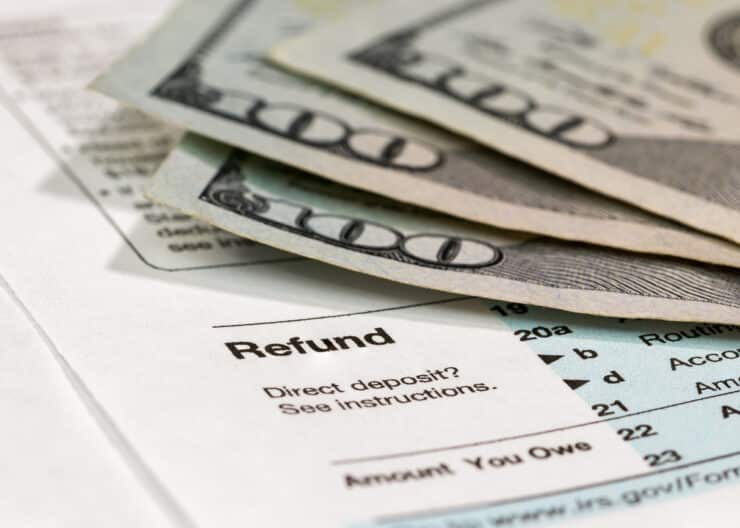Millions of Americans often rely on an infusion of cash in the weeks after they receive their tax refunds to pay bills, take trips, and generally supplement their monthly earnings. In April, the IRS reported the average refund was $2,878, nearly 10 percent less than last year. Because it’s an average, some people will get less back and some will receive more. And some folks will have to pay, of course.
But where is that money going precisely? Half of U.S. adults polled in February plan to stash the money in a savings account, according to an annual National Retail Federation survey conducted by the NRF and Prosper Insights & Analytics. The propensity to save for the future is up 10 percent from last year’s survey when just 40 percent planned to sock the money away. This year, another 33 percent of the 8,415 respondents said they’ll use the refund to pay down debt (good news as consumer debt levels have been rising). Some 28 percent reported they’ll cover everyday expenses with the refund.
If you happen to be among those who have yet to allocate your refund from Uncle Sam, here are some smart ways to put the money to good use in the months ahead. And if your check has already been spent, keep these tips in mind for when tax season rolls around again next year.
Create (or Bulk Up) Your Emergency Fund
If you have an emergency fund with three to six months’ worth of living expenses stashed in a separate account, that’s great news. If not, consider using your tax refund (or at least a portion of it) to create a rainy-day account. We need cash cushions to pay for unexpected expenses such as medical bills or big-ticket home repairs not covered by insurance. (Or when you lose a job.) Here’s why: When you have money saved, you are much less likely to reach for a high-interest credit card or personal loan to cover the costs. It’s also a good idea to keep this money separate from your checking account. Why? I cover that in my book “Money Rules.” It’s Rule No. 11: If you can’t see it and you can’t touch it, you won’t spend it.
Pay Down High-Interest Credit Card Debt
Even before your emergency cushion is fully fleshed out, paying down credit card debt is an excellent use for your tax refund. Americans have been accumulating credit card debt at an alarming rate in recent months. If you’re in that boat, take a look at the interest rates on the cards in your wallet. Use the money to completely pay off – if possible – the card with the highest rate of interest. If it will cover more than that, apply the remainder to the card with the next highest interest rate. Keep paying the debt off in the highest interest rate order until it’s gone.
Check in With HR
If you consistently receive thousands back each year from the Internal Revenue Service, that means you are overpaying, and essentially giving the government a tax-free loan. Consider changing the amount withheld from your taxes. To do that, contact your company’s human resources department (or whoever helped you with onboarding) and let them know you want to update your tax forms. Fortunately, you don’t have to wait until November for benefits renewal season to make this happen. You can do it ASAP.
Save More for Retirement
And while you’re on the phone or swapping emails with the HR folks, you could bump up the amount you save in your retirement account, such as a 401(k) or IRA. When you do that, it lowers your taxable income, too. A win/win in my book.
With reporting by Casandra Andrews






